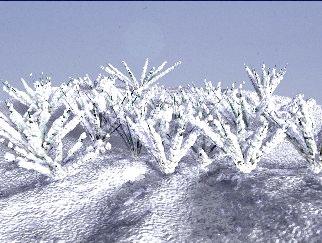To date, there has been no previous published computer
graphics research on thick snow pack modelling, and only two papers on
snow pack rendering, which clearly makes it an appropriate and worthy topic
of research. Beyond novelty, there are other reasons for learning about
snow. In many countries, snow is a common fact of life during
the winter months. For example, January snow coverage in the Northern Hemisphere
has ranged between 41.7 - 49.8 million square kilometres , or nearly half
of the hemisphere's total land mass. A phenomenon that is so common and
pervasive to most of us is clearly of interest and importance.

If we move beyond simulating snow for its pure challenge and ubiquity,
we can see that there are many practical advantages to a working algorithm.
Without an automatic model of snowfall, artists must use natural intuition
to produce snow covered surfaces - an extremely time consuming task, depending
on how realistic one wants the final result. A single tree might have a
hundred branches, each with a complex drapery of snow, and each showering
snow down onto branches below. Even if one painstakingly created every
surface by hand, the image would still likely be very far from what Nature
creates in a few hours. An automatic snowfall algorithm would simultaneously
save time, and open up computer generated effects to the possibilities
of a whole new season.
Besides the practicalities of research and application, there is another
reason for investigating snowfall. Snow transforms commonplace scenes into
fantastic wonderlands, greatly changing the appearance and mood of the
landscape. It is our desire to be able to add snow to some of the classic
images produced throughout the development of computer graphics - to see
familiar scenes in a fresh, exciting way.
|
|

